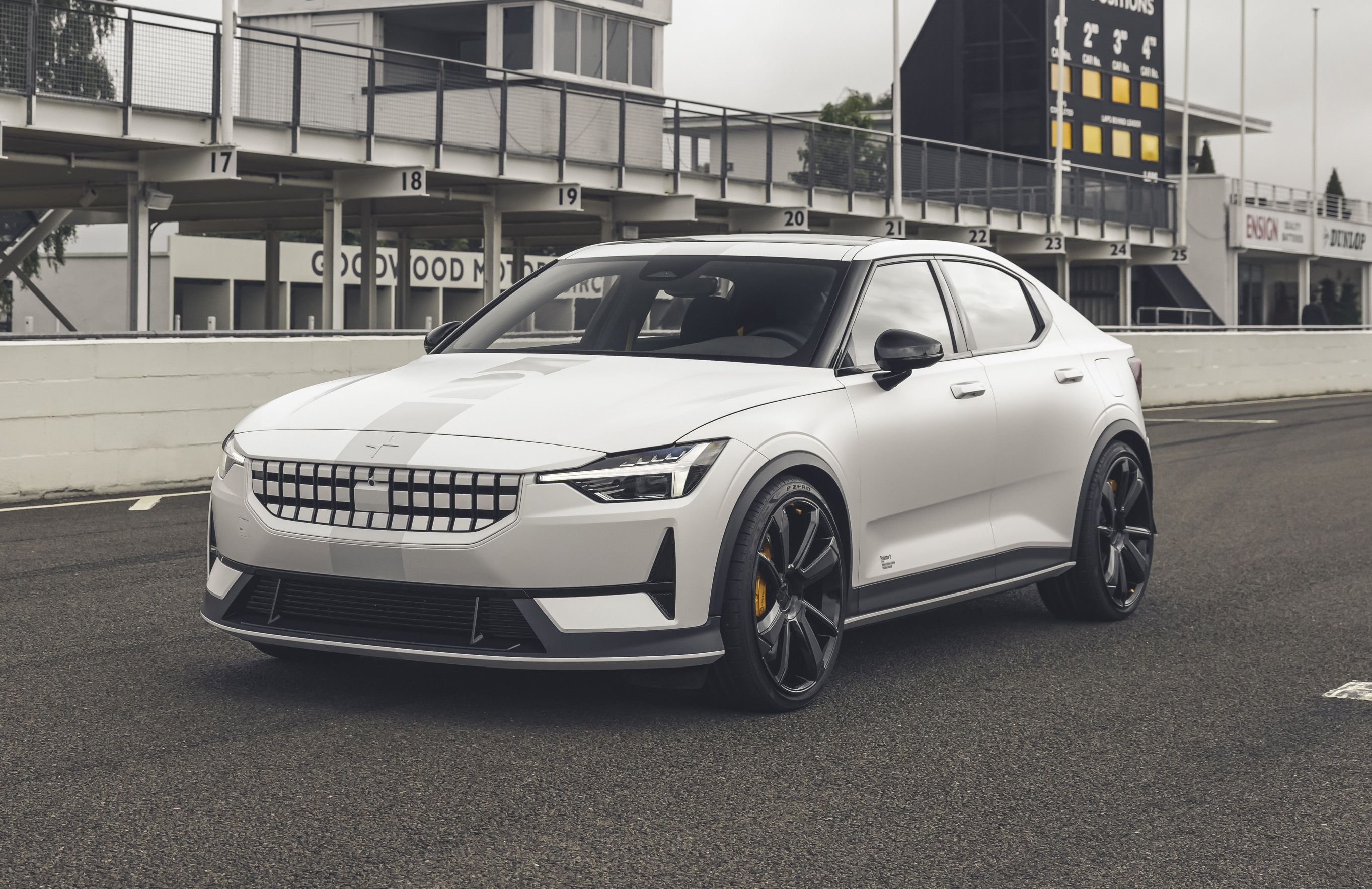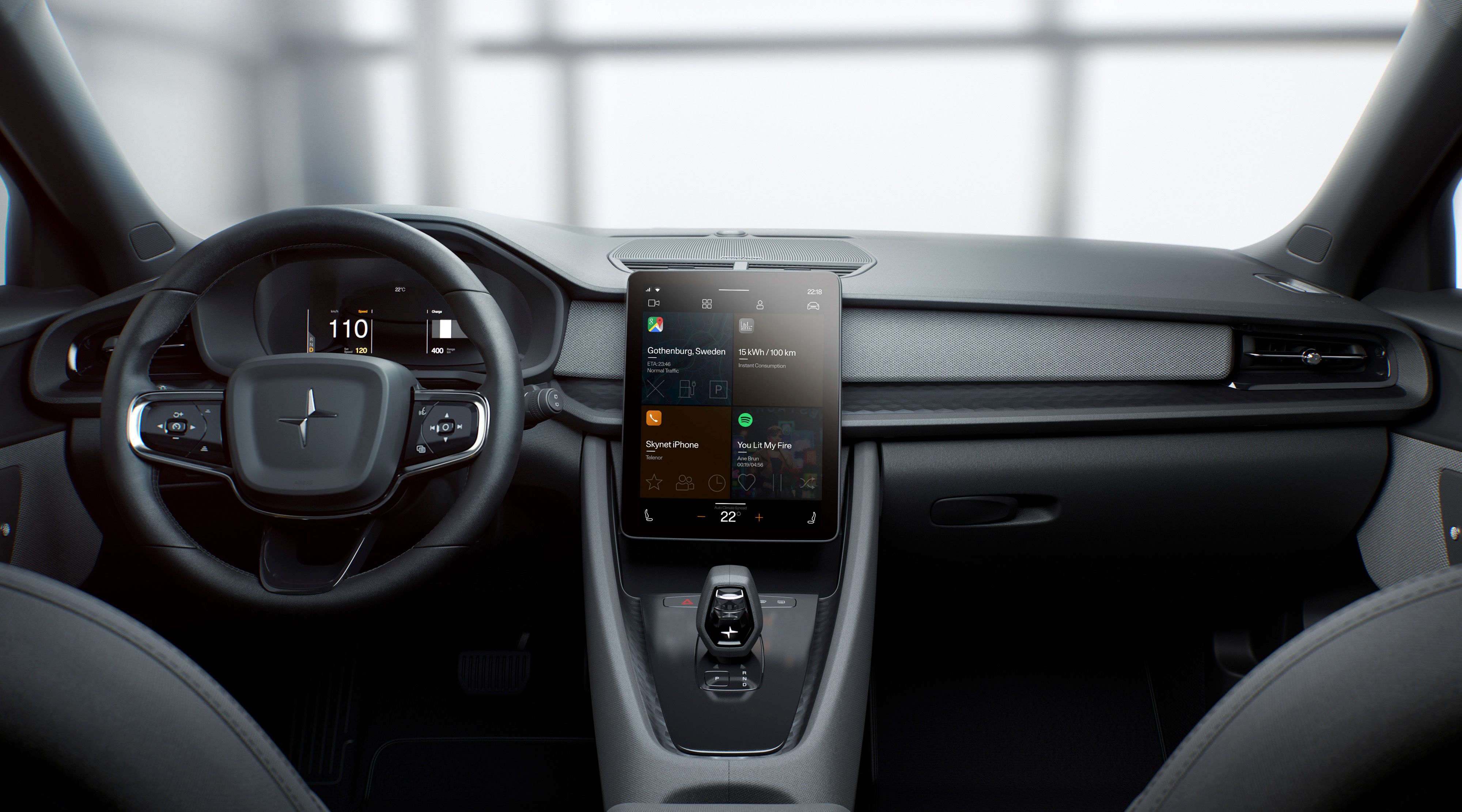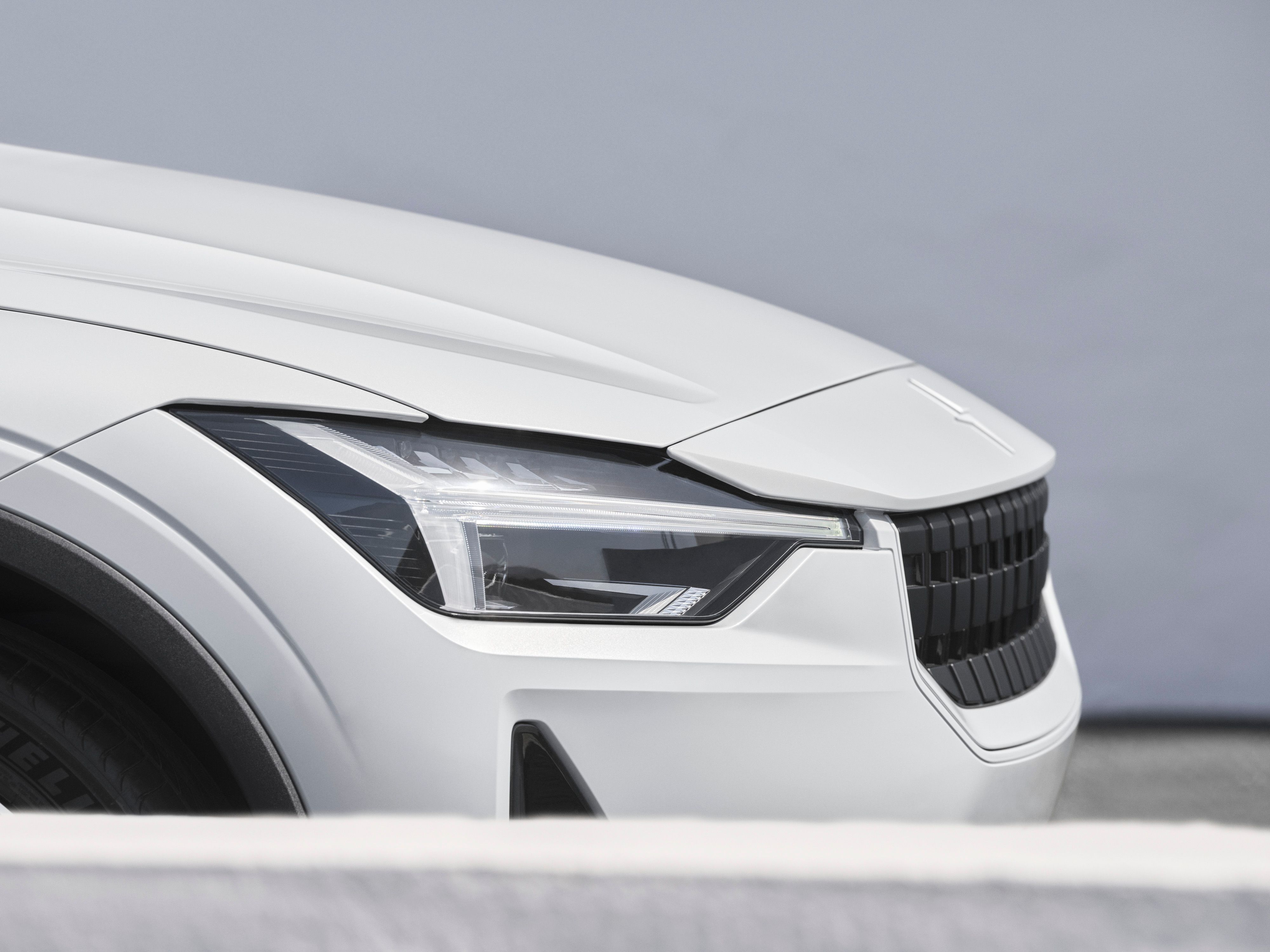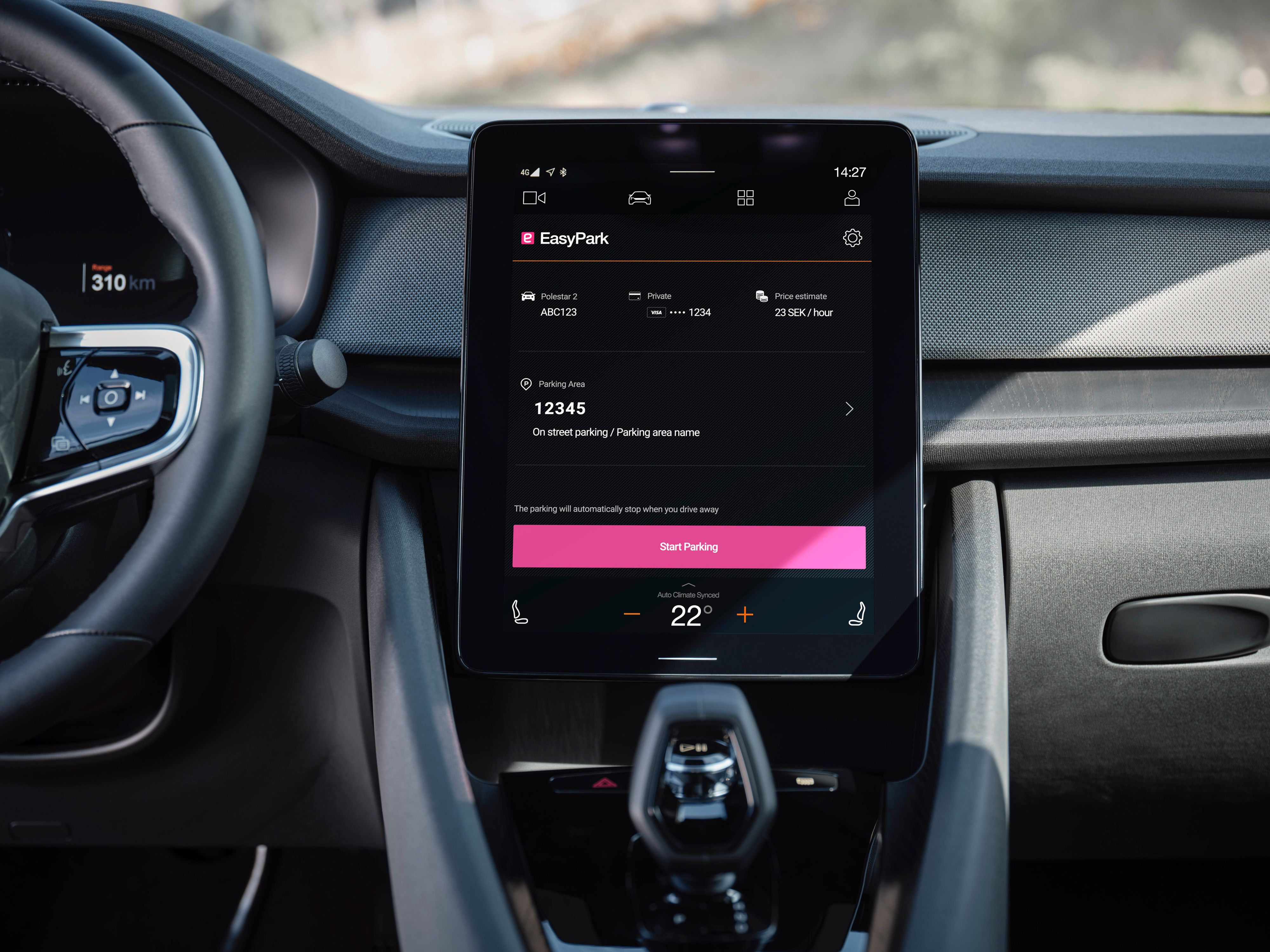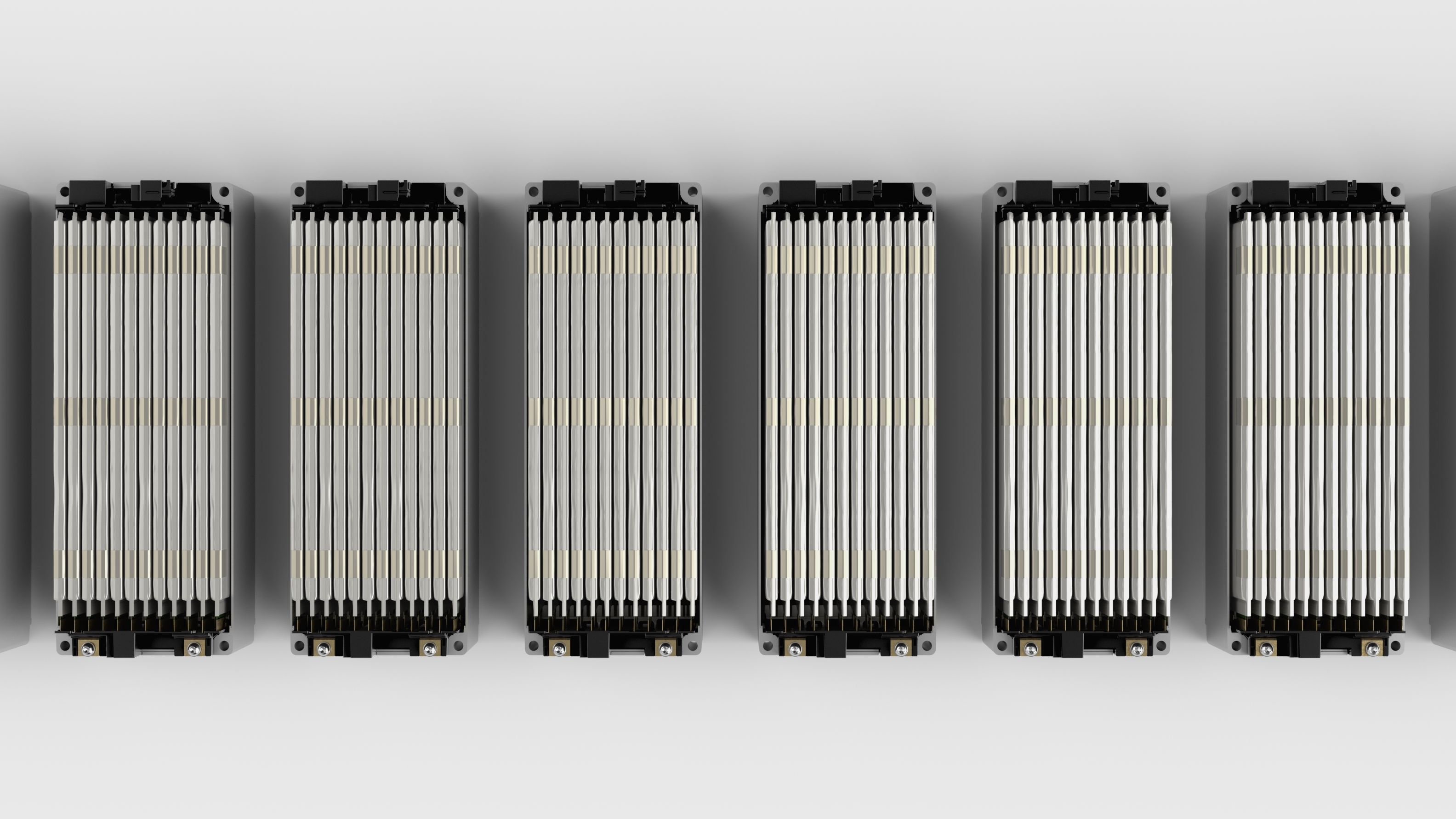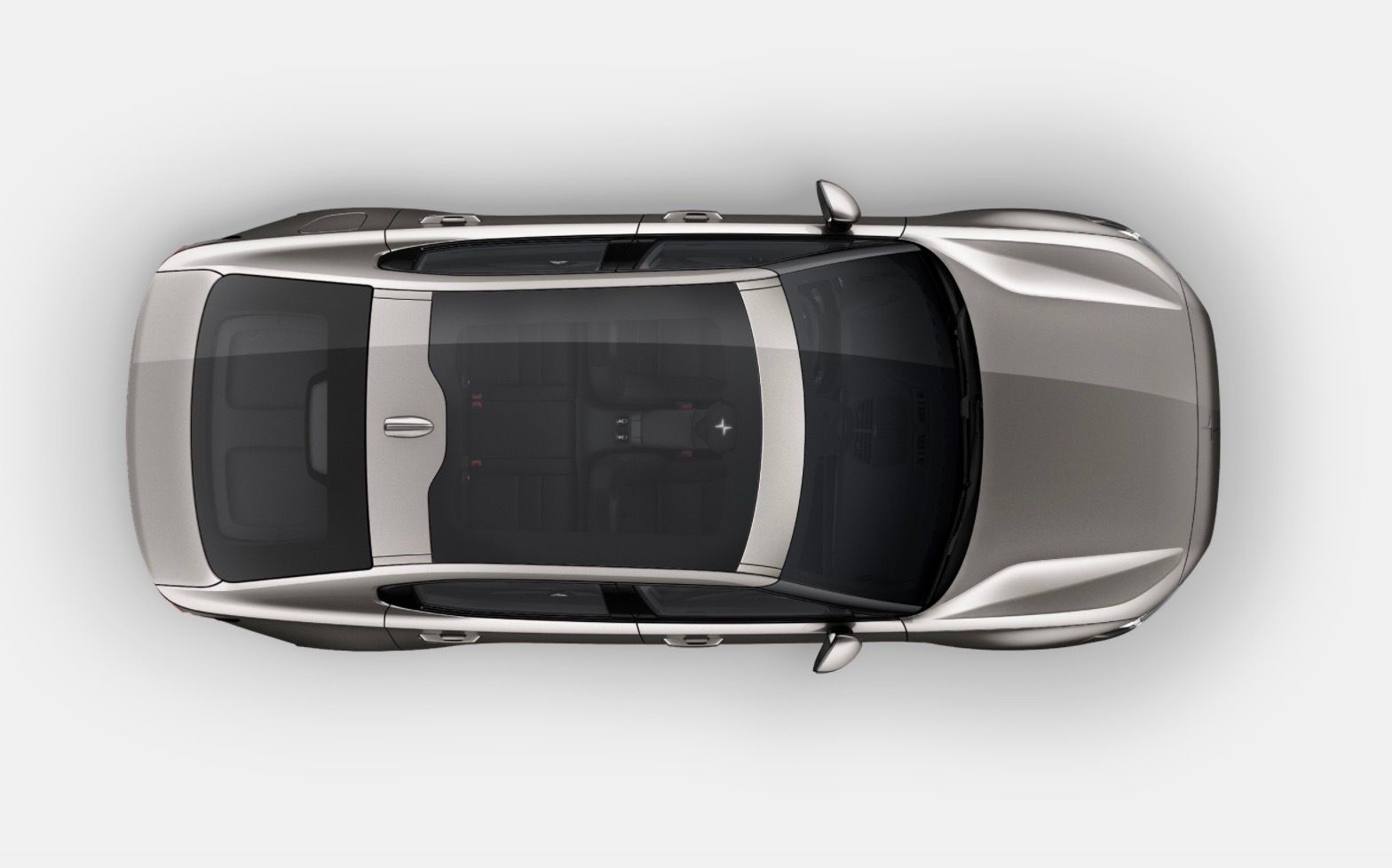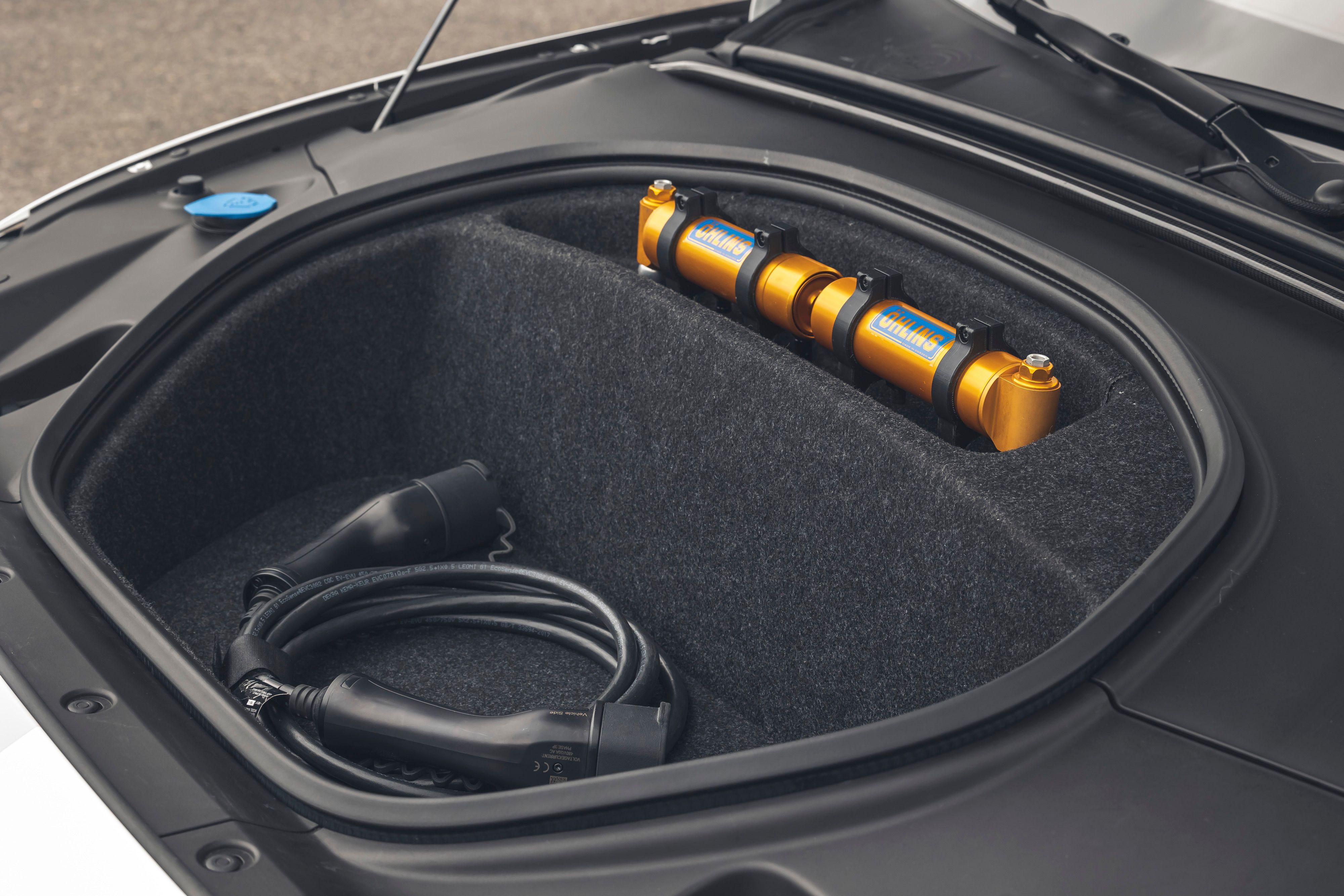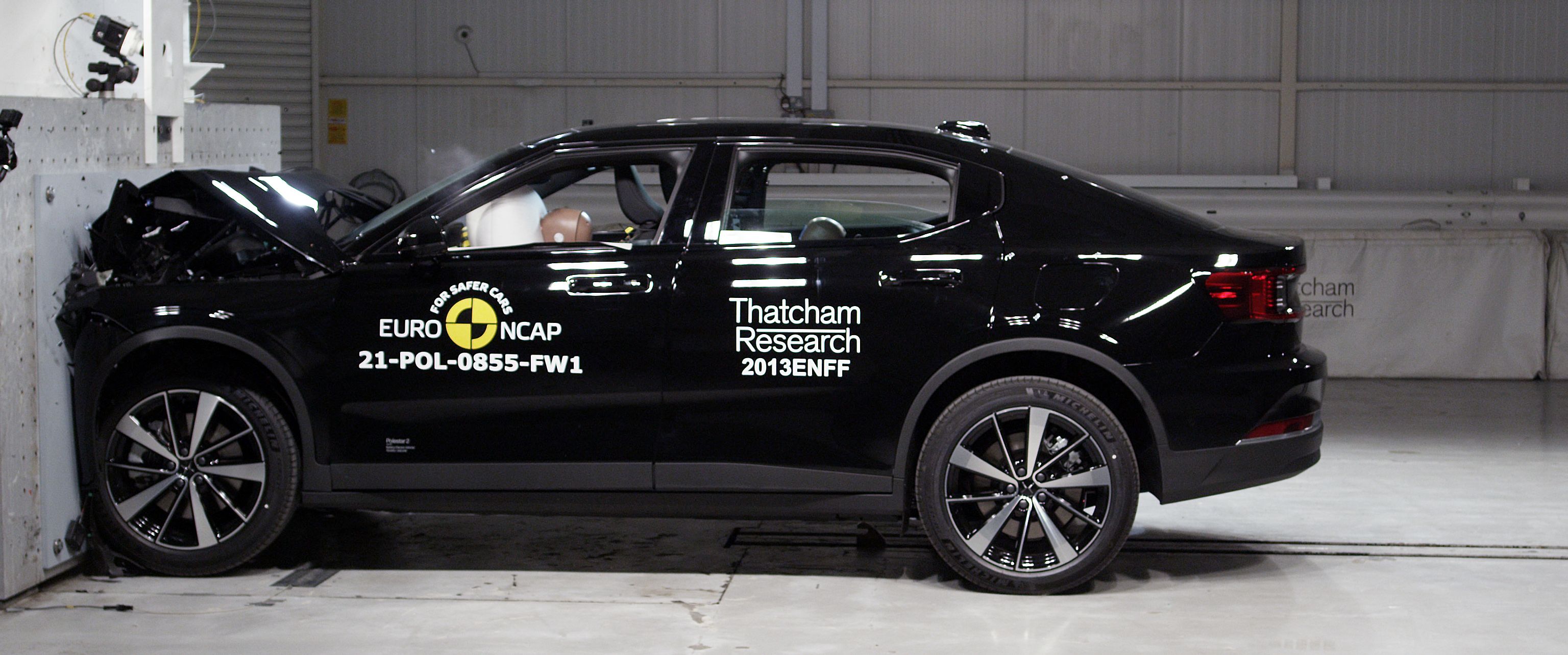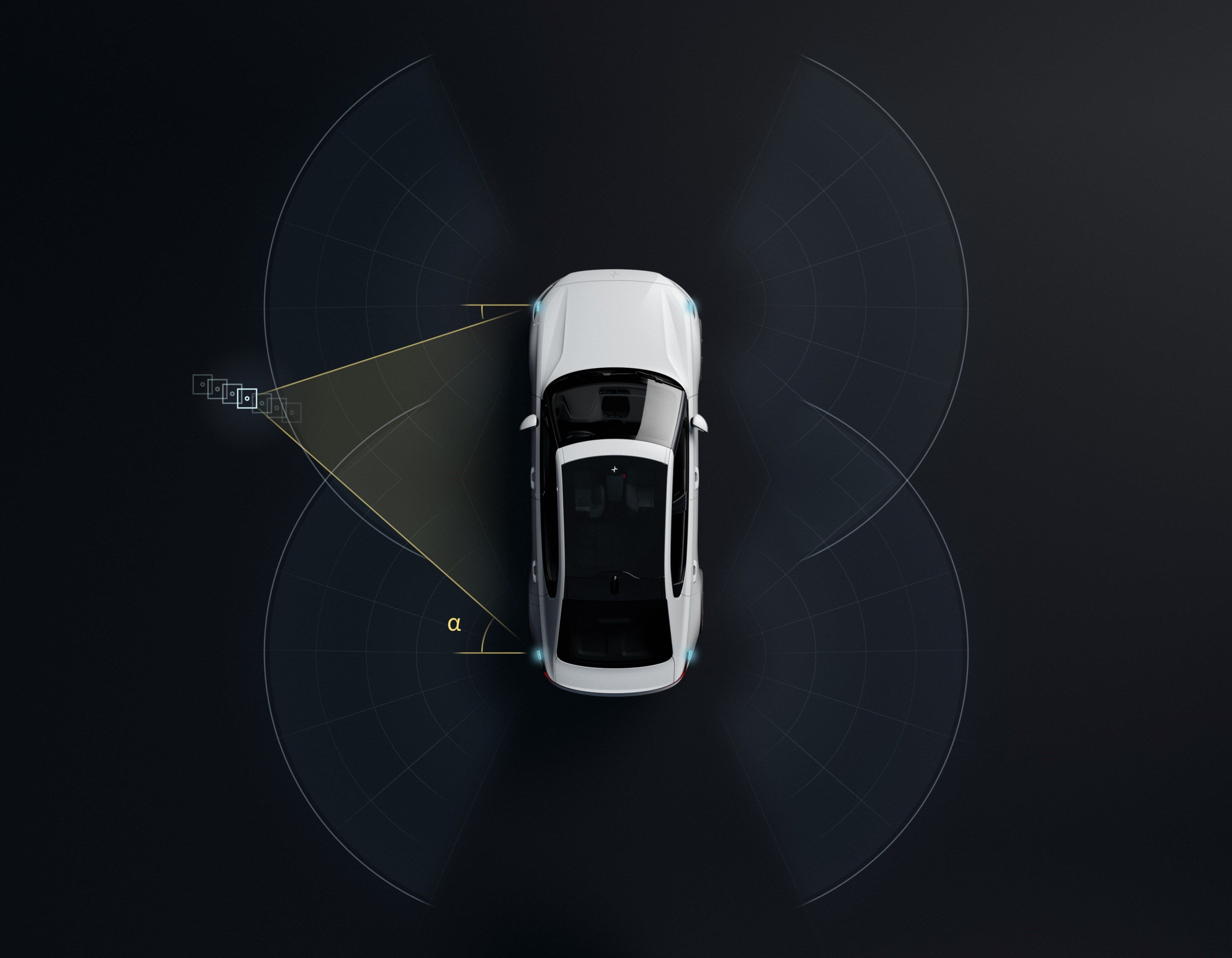Once Volvo's version of the AMG, Polestar has made a name for itself as the new EV division for Volvo. The first Polestar showed the market what a sports EV sedan should look like, and the new one is not any different. It has the proportions of a sedan but the ride height of a crossover, much like Forester stance save for the rear estate body. At $47,200, it's cheap (for an EV) and a clean-cut looker, but the latest iteration of the Polestar is not just a pretty-faced environmental ambassador.
Weavetech Interior
Polestar provided a progressive design language featuring vegan-friendly weave tech material for increased strength and durability. The seating also has an unconventional look. Its backrests are set in embossed textile with geometrically inspired patterns. 3-D etched deco is also featured on the horizontal part of the dash and the sloping panel on the inside of the tunnel console.
Polestar Headlight Pixel Technology
The technology is tailored to the automaker's home market, where the nights are sometimes much longer than the days. Polestar 2 owners in this region are encouraged to have their high beams on all the time but do not have to worry about blinding others due to the Pixel LEDs. These headlights each have 84 individual LEDs that form a matrix. Each can be controlled on its own, meaning drivers can use the full lights at all times and let the system dim the lights that would blind oncoming traffic. The system can allegedly sense and dim the lighting for up to five cars moving in the opposite direction. However, this technology is not yet available for the American market.
Specially Optimized Apps
The Polestar is also well known for its Android-based infotainment platform. Polestar has been working towards optimizing the Google Play applications and integrating them with the car's system. For example, the Chargepoint application allows drivers to plan routes that would correspond with nearby charging stations. It considers the charging speed capabilities and prices, allowing one to make payments from the center screen. The Easypark application is also available, allowing one to pay for parking without having to leave the vehicle. Even though the system is primarily oriented for Android, integrated Apple Car Play should be added via an update soon.
Stiff Battery Case
The Polestar 2 features a large 75 kWh with 284 cells weighing over 1000 pounds, and it is set in an aluminum case beneath the passenger compartment. The cage adds to the stiffness of the car body, and it is a probable reason why the Polestar 2 feels planted on the road even without the structural roof cross-member, which spans the B-pillars. It is also typical of models that have glass roofing. The central location of the heavy battery lowers the car's center of gravity, as well so it functions similar to a mid-engined sports car.
Glass Roof
Rear passengers will enjoy the panoramic roof made of tinted, laminated glass. It gives the cabin a feeling of extra space while reducing the glare and ultraviolet radiation. That extends from the sun visors at the front to ahead of the rear hatch, and there is no cross-roof support. At night, passengers would get an unobstructed view of the moon and the stars when driving in the country.
Extra Cargo Room
There is a storage space under the wide front hood of the Polestar 2, which is surprising as it does not reveal anything mechanical or electrical. The 35-liter storage space is only enough to fit a single carry-on or charging cables. It is also possible to load cargo when the rear seats are folded down, much like the conventional compact SUVs.
Advanced Levels of Safety
Volvo is famous for being one of the vanguards of safety, so it makes sense that certain tenets would be passed on to its sub-brand. Polestar has fitted inner-side airbags to the front seating, and these are standard for every market. They add an extra layer of protection for the limbs as well as the front passengers. Polestar added Pilot Assist, Cross Traffic Alerts Blind Spot Information Systems as well.
It Literally Lights up as the Driver Approaches
When the driver approaches the Polestar 2, it recognizes them provided they have their key fob or phone. The 84 LED Pixels in the headlights twinkle while the taillights race outward from the center. The Keyless 'Phone-as-Key' technology is standard as it replaces the physical key with a smartphone application. The sensors can also detect the driver's phone from up to ten meters away, adjusting the seat and mirror positions to the pre-set preferences.

